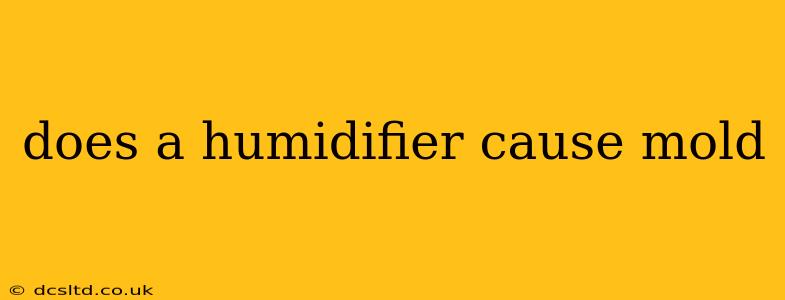Humidifiers are fantastic for combating dry air, especially during winter months. They alleviate dry skin, coughs, and can even help with snoring. However, a common concern surrounding humidifier use is the potential for mold growth. The short answer is: yes, a humidifier can cause mold, but it doesn't have to. Understanding how humidifiers work, and taking proactive steps, will greatly reduce the risk.
How Can a Humidifier Promote Mold Growth?
Humidifiers increase the moisture content in the air. Mold thrives in damp environments, and this increased humidity provides the perfect breeding ground. If not properly maintained, the humidifier itself can become a reservoir for mold spores and bacteria, which can then be dispersed into the air you breathe.
What Types of Humidifiers are More Prone to Mold?
Different types of humidifiers carry varying risks:
-
Cool-mist humidifiers: These are generally considered safer than warm-mist humidifiers, but still require regular cleaning to prevent mold. The cool mist creates a moist environment, but the lower temperature makes it less ideal for mold than warm, stagnant water.
-
Warm-mist humidifiers: These humidifiers heat the water, creating steam. While the heat can kill some bacteria, it can also create a more ideal environment for certain types of mold if not cleaned properly. They also pose a higher burn risk, making them less suitable for homes with young children or pets.
-
Ultrasonic humidifiers: These use ultrasonic vibrations to create a fine mist. While convenient, they are particularly prone to mineral buildup, which can become a breeding ground for mold and bacteria. Regular cleaning and using distilled water are essential.
How Can I Prevent Mold Growth in My Humidifier?
Preventing mold growth is crucial for maintaining a healthy home environment. Here's how:
1. Regular Cleaning:
This is the most important step. Follow the manufacturer's instructions for cleaning your specific humidifier model. Generally, this involves emptying the water tank daily and thoroughly cleaning the humidifier at least once a week. Use a mild soap and water solution, and rinse thoroughly.
2. Using Distilled Water:
Tap water contains minerals that can build up inside the humidifier, leading to mold and mineral deposits. Using distilled water minimizes this buildup and extends the lifespan of your humidifier.
3. Proper Ventilation:
Ensure adequate ventilation in the room where you're using the humidifier. Good airflow helps prevent excessive humidity, reducing the risk of mold.
4. Don't Over-humidify:
Monitor the humidity levels in your home using a hygrometer. Aim for a humidity level between 30% and 50%. Excessive humidity significantly increases the risk of mold growth.
5. Check for Leaks:
Regularly inspect your humidifier for leaks. Leaking water can create damp areas around the humidifier, encouraging mold growth.
What are the Signs of Mold in My Humidifier?
Be vigilant for these signs:
- Musty odor: A musty smell emanating from the humidifier is a clear indicator of mold growth.
- Visible mold: Check the water tank, filter, and other components for any visible mold or mildew. It often appears as black, green, or gray spots.
- Slippery or slimy residue: The presence of a slimy or slippery residue in the humidifier is also a sign of potential mold growth.
Is it Safe to Use a Humidifier if I See Mold?
No. If you see any signs of mold, immediately stop using the humidifier and thoroughly clean it. If the mold is extensive or you're unable to remove it completely, consider replacing the humidifier. Breathing in mold spores can cause various health problems, including allergies and respiratory issues.
By following these preventive measures, you can significantly reduce the risk of mold growth associated with your humidifier and enjoy its benefits safely. Remember, prevention is key!
